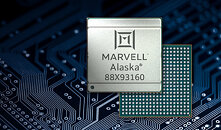
SK hynix Presents Future DRAM Technology Roadmap at IEEE VLSI 2025
SK hynix Inc. announced today that it presented a new DRAM technology roadmap for the next 30 years and the direction for a sustainable innovation at the IEEE VLSI symposium 2025 held in Kyoto, Japan. Cha Seon Yong, Chief Technology Officer (CTO) of SK hynix, delivered on June 10th a plenary session on "Driving Innovation in DRAM Technology: Towards a Sustainable Future".
In his speech, CTO Cha explained that it is increasingly difficult to improve performance and capacity with scaling through current technology platform. "In order to overcome such limitations, SK hynix will apply the 4F² VG (Vertical Gate) platform and 3D DRAM technology to technologies of 10-nanometer level or below with innovation in structure, material and components," he said. The 4F² VG platform is a next-generation memory technology that minimizes the cell area of DRAM and enables high-integration, high-speed and low-power through a vertical gate structure.
In his speech, CTO Cha explained that it is increasingly difficult to improve performance and capacity with scaling through current technology platform. "In order to overcome such limitations, SK hynix will apply the 4F² VG (Vertical Gate) platform and 3D DRAM technology to technologies of 10-nanometer level or below with innovation in structure, material and components," he said. The 4F² VG platform is a next-generation memory technology that minimizes the cell area of DRAM and enables high-integration, high-speed and low-power through a vertical gate structure.
















































